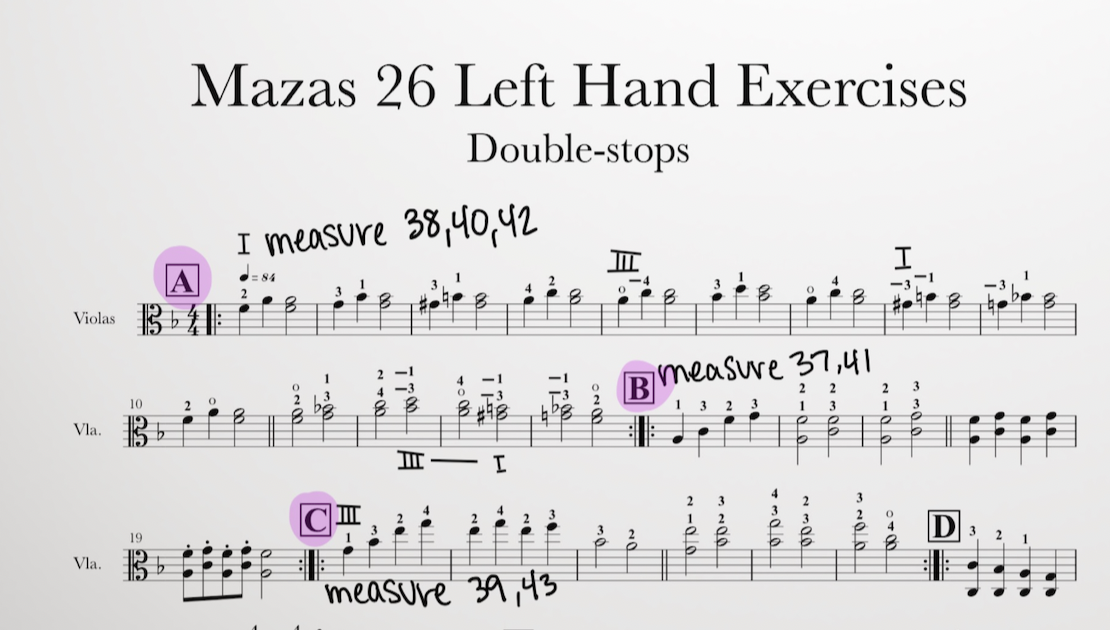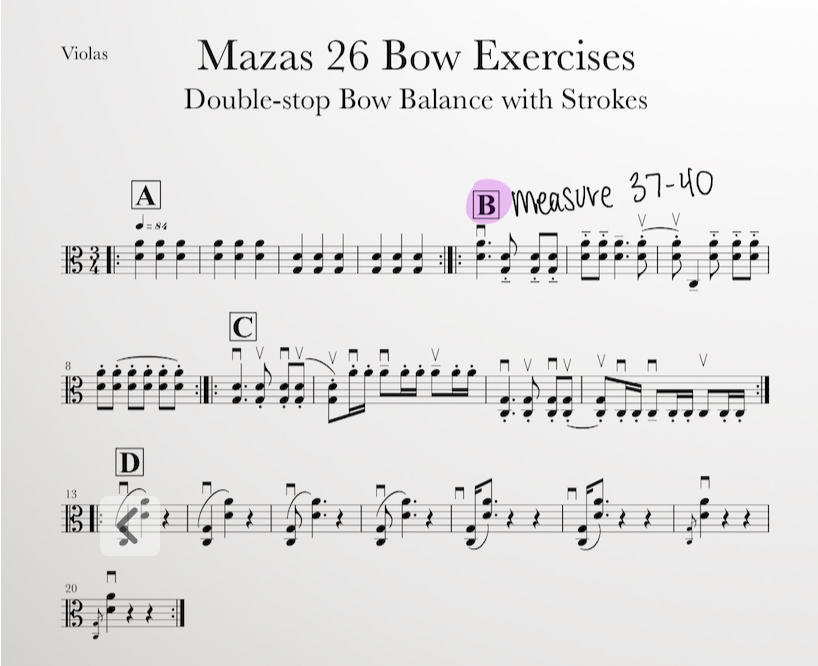IN THIS LESSON
PHRASE 6
MEASURES 37-44 / 45-52
This is our first double-stops phrase! Take the time to practice slowly and learn how each double-stop sounds when it is in tune, as well as how the upper and lower voices sound individually. This will help you move seamlessly between them, forming an in-tune melody.
The first 4 measures of the phrase are forte, embodying a grand and confident character. Relax and sink in with the bow to scoop out each note. Watch for the 3 separate bows in the third measure.
The second half of the phrase is piano, presenting a gentler and more carefree version of similar music. Use less bow and lighten up the stroke. Watch for the up-up-up bowing in the third measure, and vibrate the final half note of the phrase.
General Practice Methods:
Practice toggling back and forth between each double-stop so you can move and land precisely.
To hear these double-stops melodically, practice placing your fingers on both strings but play the bow only on one string at a time to hear the moving line of notes.
Use Double Stop Bow exercises A to find balance on our string levels and exercise B to practice the levels and articulation for this phrase.
Use Double Stop Left Hand exercises A, B, and C to work on tuning this passage.
Phase 1 of Practice – Slow and Simple:
Begin practicing on the string with separate bows.
Practice one line at a time.
Practice toggling between sets of double-stops.
Vibrate longer note values.
Phase 2 of Practice – Adding Articulation and Speed:
Add in the bowings and articulations.
Continue doing the toggling and one-line practice methods.
Begin speeding up the whole phrase with a metronome. Perfect one measure at a time at this quicker tempo, and then string them together until you can play the full phrase at one speed without stopping.
Breaking Down the Phrase & Reference Guide to Previous Exercises:
Measure 37:
Forte version of the idea.
Practice placing your third finger exactly between the G and D strings to play the blocked 5th.
Measure 38:
With this open hand frame, be sure to reach far enough to play the 4th finger A in tune. Do not let your wrist stick out – it will make the 4th finger feel even farther away.
Measure 39:
While you play the open C string, shift to third position and place the hand frame.
The 3 notes after the open C are separate bows.
Measure 40:
Play a light full bow on the downbeat to make space for the following up-bows. Diminuendo through these notes.
Measure 41:
Piano version of the idea.
Measure 43:
While you play the open C string, shift to third position and place the hand frame.
After the open C string, play the next 3 notes up-up-up.
Measure 44:
Vibrate these longer notes if you can.
-
Add a short summary or a list of helpful resources here.


